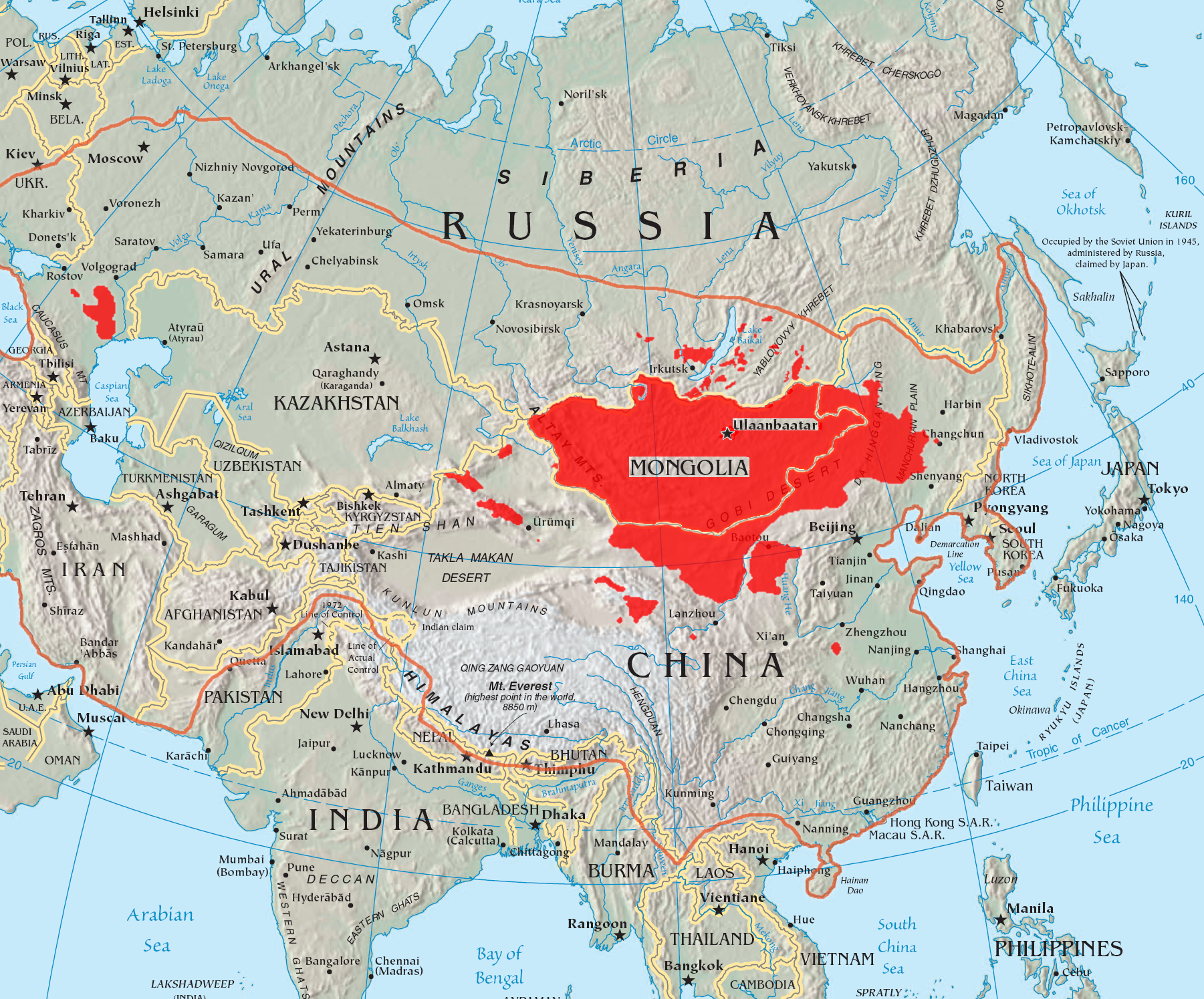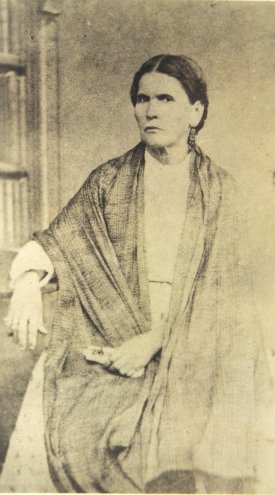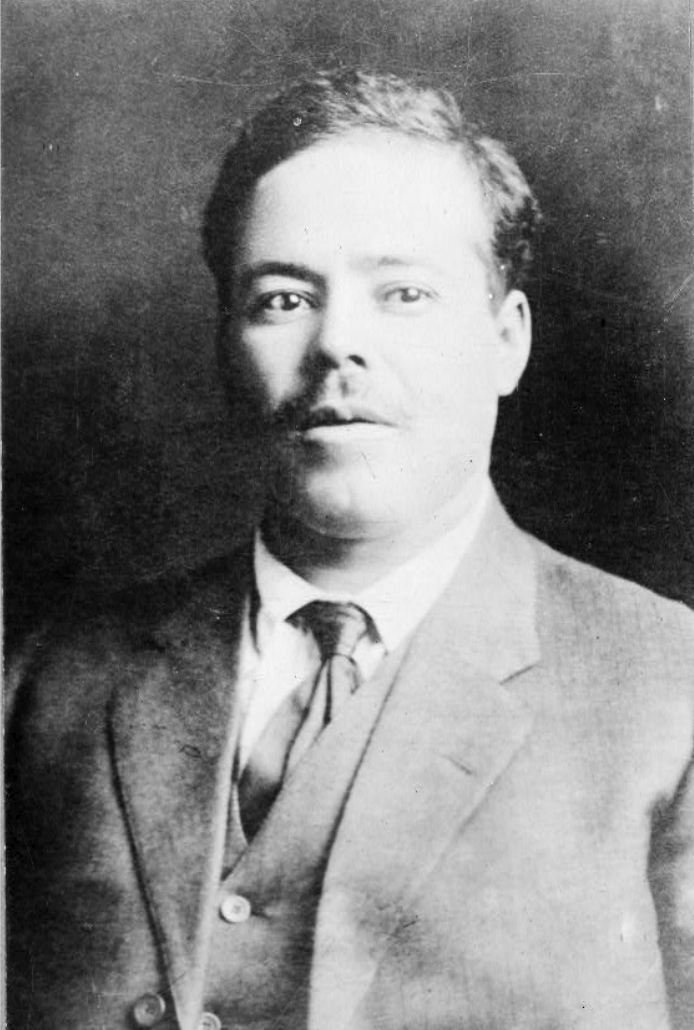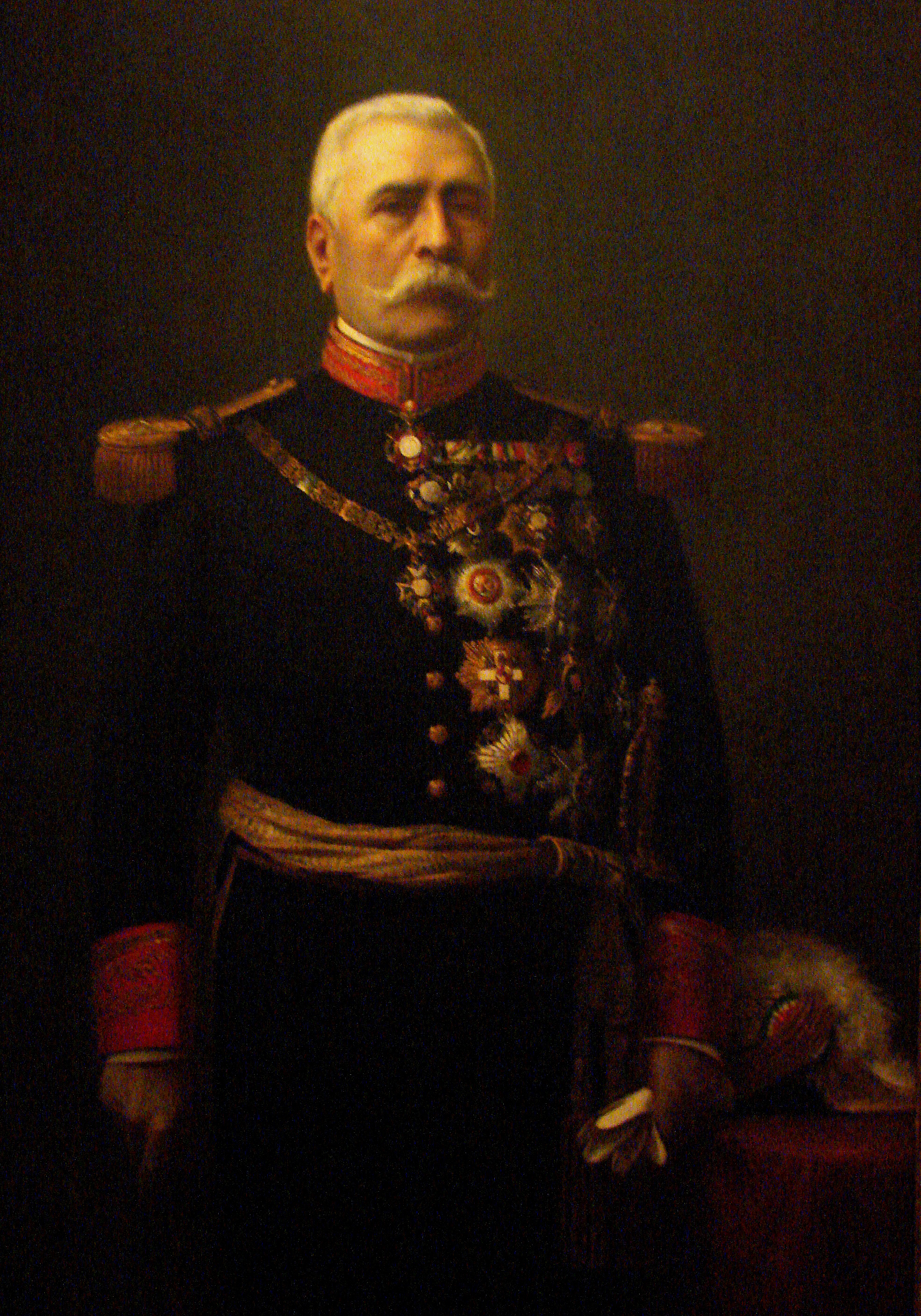|
Hidalgo Del Parral
Hidalgo del Parral is a city and seat of the municipality of Hidalgo del Parral in the Mexican state of Chihuahua. It is located in the southern part of the state, from the state capital, the city of Chihuahua, Chihuahua. As of 2015, the city of Hidalgo del Parral had a population of 109,510 inhabitants, while the metro area had a population of 129,688 inhabitants. The city was founded as San José del Parral. The name was changed after independence from Spain, in honour of Fr Miguel Hidalgo, widely considered the 'Father of the Country'. History According to legend, Juan Rangel de Biezma came here in 1629, picked up a rock on the “Cerro la Prieta” (La Prieta Hill), licked it and proclaimed “There is a mineral deposit here.” This deposit produced silver for 340 years. Parral was once a bustling center for silver mining. As early as 1567, the silver mines at Santa Barbara were established in the territory of the Conchos people. However, in 1631, a vast new silver strike ... [...More Info...] [...Related Items...] OR: [Wikipedia] [Google] [Baidu] |
City
A city is a human settlement of notable size.Goodall, B. (1987) ''The Penguin Dictionary of Human Geography''. London: Penguin.Kuper, A. and Kuper, J., eds (1996) ''The Social Science Encyclopedia''. 2nd edition. London: Routledge. It can be defined as a permanent and densely settled place with administratively defined boundaries whose members work primarily on non-agricultural tasks. Cities generally have extensive systems for housing, transportation, sanitation, utilities, land use, production of goods, and communication. Their density facilitates interaction between people, government organisations and businesses, sometimes benefiting different parties in the process, such as improving efficiency of goods and service distribution. Historically, city-dwellers have been a small proportion of humanity overall, but following two centuries of unprecedented and rapid urbanization, more than half of the world population now lives in cities, which has had profound consequ ... [...More Info...] [...Related Items...] OR: [Wikipedia] [Google] [Baidu] |
Eastern Asia
East Asia is the eastern region of Asia, which is defined in both geographical and ethno-cultural terms. The modern states of East Asia include China, Japan, Mongolia, North Korea, South Korea, and Taiwan. China, North Korea, South Korea and Taiwan are all unrecognised by at least one other East Asian state due to severe ongoing political tensions in the region, specifically the division of Korea and the political status of Taiwan. Hong Kong and Macau, two small coastal quasi-dependent territories located in the south of China, are officially highly autonomous but are under Chinese sovereignty. Japan, Taiwan, South Korea, Mainland China, Hong Kong, and Macau are among the world's largest and most prosperous economies. East Asia borders Siberia and the Russian Far East to the north, Southeast Asia to the south, South Asia to the southwest, and Central Asia to the west. To the east is the Pacific Ocean and to the southeast is Micronesia (a Pacific Ocean island group, classi ... [...More Info...] [...Related Items...] OR: [Wikipedia] [Google] [Baidu] |
Antonio Decanini
Antonio is a masculine given name of Etruscan origin deriving from the root name Antonius. It is a common name among Romance language-speaking populations as well as the Balkans and Lusophone Africa. It has been among the top 400 most popular male baby names in the United States since the late 19th century and has been among the top 200 since the mid 20th century. In the English language it is translated as Anthony, and has some female derivatives: Antonia, Antónia, Antonieta, Antonietta, and Antonella'. It also has some male derivatives, such as Anthonio, Antón, Antò, Antonis, Antoñito, Antonino, Antonello, Tonio, Tono, Toño, Toñín, Tonino, Nantonio, Ninni, Totò, Tó, Tonini, Tony, Toni, Toninho, Toñito, and Tõnis. The Portuguese equivalent is António ( Portuguese orthography) or Antônio (Brazilian Portuguese). In old Portuguese the form Antão was also used, not just to differentiate between older and younger but also between more and less important. In ... [...More Info...] [...Related Items...] OR: [Wikipedia] [Google] [Baidu] |
Federico Amérigo Rouvier
Federico (; ) is a given name and surname. It is a form of Frederick, most commonly found in Spanish, Portuguese and Italian. People with the given name Federico Artists * Federico Ágreda, Venezuelan composer and DJ. * Federico Aguilar Alcuaz, renowned Filipino painter. * Federico Andahazi, Argentine writer and psychologist. * Federico Casagrande, Italian jazz guitarist * Federico Castelluccio, Italian-American actor who is most famous for his role as Furio Giunta on the HBO TV series, The Sopranos * Federico Cortese, Italian conductor, Music Director of the Boston Youth Symphony Orchestras and the Harvard Radcliffe Orchestra * Federico Elizalde, Filipino marksman and musician * Federico Fellini, Italian film-maker and director * Federico García Lorca, Spanish poet and playwright * Federico Luppi, Argentine film, TV, radio and theatre actor * Federico Ricci, Italian composer Athletes * Federico Bruno (born 1993), Argentine distance runner * Federico Chiesa, Italian ... [...More Info...] [...Related Items...] OR: [Wikipedia] [Google] [Baidu] |
Porfirio Díaz
José de la Cruz Porfirio Díaz Mori ( or ; ; 15 September 1830 – 2 July 1915), known as Porfirio Díaz, was a Mexican general and politician who served seven terms as President of Mexico, a total of 31 years, from 28 November 1876 to 6 December 1876, 17 February 1877 to 1 December 1880 and from 1 December 1884 to 25 May 1911. The entire period from 1876 to 1911 is often referred to as Porfiriato and has been characterized as a ''de facto'' dictatorship. A veteran of the War of the Reform (1858–1860) and the French intervention in Mexico (1862–1867), Díaz rose to the rank of general, leading republican troops against the French-backed rule of Maximilian I. He subsequently revolted against presidents Benito Juárez and Sebastián Lerdo de Tejada on the principle of no re-election. Díaz succeeded in seizing power, ousting Lerdo in a coup in 1876, with the help of his political supporters, and was elected in 1877. In 1880, he stepped down and his political ally Manue ... [...More Info...] [...Related Items...] OR: [Wikipedia] [Google] [Baidu] |
Pedro Alvarado (Mexican Miner)
Pedro Alvarado Torres of Parral, Chihuahua was a mining magnate and philanthropist who operated the Palmilla mine near Parral in Chihuahua Mexico that was one of the country's richest silver mines. He was married to Virginia Griensen Zambrano sp. The family became friends and supporters of Doroteo Arango Francisco "Pancho" Villa (,"Villa" '' Palacio de Alvarado =
Sources [...More Info...] [...Related Items...] OR: [Wikipedia] [Google] [Baidu] |
Billy The Kid
Billy the Kid (born Henry McCarty; September 17 or November 23, 1859July 14, 1881), also known by the pseudonym William H. Bonney, was an outlaw and gunfighter of the American Old West, who killed eight men before he was shot and killed at the age of 21. He also fought in New Mexico's Lincoln County War, during which he allegedly committed three murders. McCarty was orphaned at the age of 15. His first arrest was for stealing food at the age of 16 in 1875. Ten days later, he robbed a Chinese laundry and was arrested again but escaped shortly afterwards. He fled from New Mexico Territory into neighboring Arizona Territory, making himself both an outlaw and a federal fugitive. In 1877, he began to call himself "William H. Bonney". Two versions of a wanted poster dated September 23, 1875 referred to him as "Wm. Wright, better known as Billy the Kid". After killing a blacksmith during an altercation in August 1877, McCarty became a wanted man in Arizona and returned to N ... [...More Info...] [...Related Items...] OR: [Wikipedia] [Google] [Baidu] |
Dave Rudabaugh
David Rudabaugh (July 14, 1854February 18, 1886) was a cowboy, outlaw, and gunfighter in the American Old West. Modern writers often refer to him as "Dirty Dave" because of his alleged aversion to water, though no evidence has emerged to show that he was ever referred to as such in his own lifetime. Early life Rudabaugh was born in Fulton County, Illinois. His father was killed in the Civil War when Dave was a boy. The family moved to Ohio and later Kansas. Outlaw The outlaw career of Dave Rudabaugh began in earnest in Arkansas in the early 1870s. He was part of a band of outlaws who robbed and participated in cattle rustling along with Milton Yarberry and Mysterious Dave Mather. The three were suspected in the death of a rancher and fled the state. By some accounts all three went to Decatur, Texas, but other accounts have Rudabaugh heading to the Black Hills of South Dakota, where he became a stagecoach A stagecoach is a four-wheeled public transport coach used to car ... [...More Info...] [...Related Items...] OR: [Wikipedia] [Google] [Baidu] |
Pancho Villa
Francisco "Pancho" Villa (, Orozco rebelled in March 1912, both for Madero's continuing failure to enact land reform and because he felt insufficiently rewarded for his role in bringing the new president to power. At the request of Madero's chief political ally in the state, Chihuahua Governor Abraham González, Villa returned to military service under Madero to fight the rebellion led by his former comrade Orozco. Although Orozco appealed with him to join his rebellion, Villa again gave Madero key military victories. With 400 cavalrymen, he captured Parral from the Orozquistas and then joined forces in the strategic city of Torreón with the Federal Army under the command of General Victoriano Huerta.Krauze, ''Mexico: Biography of Power'', p. 309. Huerta initially welcomed the successful Villa, and sought to bring him under his control by naming Villa an honorary brigadier general in the Federal Army, but Villa was not flattered or controlled easily. Huerta then sought to di ... [...More Info...] [...Related Items...] OR: [Wikipedia] [Google] [Baidu] |
Mexican Revolution
The Mexican Revolution ( es, Revolución Mexicana) was an extended sequence of armed regional conflicts in Mexico from approximately 1910 to 1920. It has been called "the defining event of modern Mexican history". It resulted in the destruction of the Federal Army and its replacement by a revolutionary army, and the transformation of Mexican culture and government. The northern Constitutionalist faction prevailed on the battlefield and drafted the present-day Constitution of Mexico, which aimed to create a strong central government. Revolutionary generals held power from 1920 to 1940. The revolutionary conflict was primarily a civil war, but foreign powers, having important economic and strategic interests in Mexico, figured in the outcome of Mexico's power struggles. The United States played an especially significant role. Although the decades-long regime of President Porfirio Díaz (1876–1911) was increasingly unpopular, there was no foreboding in 1910 that a revoluti ... [...More Info...] [...Related Items...] OR: [Wikipedia] [Google] [Baidu] |
XHMH-TV
XHMH-TDT is a television station in Hidalgo del Parral, Chihuahua, Mexico. It broadcasts on virtual channel 13 and currently carries Multimedios Televisión programming. History XHMH-TV received its concession on June 16, 1977. It was owned by Pedro Meneses Hoyos, who was part of a pioneering family in Chihuahua broadcasting. The Meneses were involved in the foundation of XEJ and XEPM television in Ciudad Juárez. XHMH originally broadcast on channel 12 with an effective radiated power of 5,500 watts, but in the 1980s it moved to channel 13 and later raised its power to 85,000 watts. Canal 13 was transferred to Meneses's successor, Beatriz Molinar Fernández, after his death on May 5, 1998. After her death, the station passed to Pedro Luis Fitzmaurice Meneses. In 2014, digital facilities for XHMH were authorized, and it built XHMH-TDT on digital channel 30 (using PSIP to show as channel 13.1). Until 2019, XHMH was a Televisa Grupo Televisa is a Mexican multimedia mass me ... [...More Info...] [...Related Items...] OR: [Wikipedia] [Google] [Baidu] |






